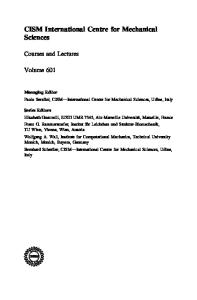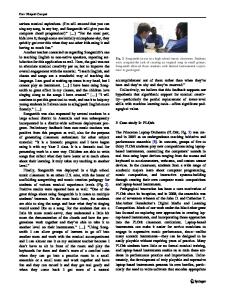A Combined Strategy of Additive Manufacturing to Support Multidisciplinary Education in Arts, Biology, and Engineering
- PDF / 2,979,422 Bytes
- 16 Pages / 595.276 x 790.866 pts Page_size
- 87 Downloads / 264 Views
A Combined Strategy of Additive Manufacturing to Support Multidisciplinary Education in Arts, Biology, and Engineering Henry A. Colorado1 · David E. Mendoza1 · Fernando L. Valencia2 Accepted: 6 October 2020 © Springer Nature B.V. 2020
Abstract This research presents results for the design and creation of supporting teaching materials using additive manufacturing. The materials are inspired by selected artwork of four animal species, which belong to a collection from the museum of the University of Antioquia. The topic selected was fauna in Colombia, and the animals in question were chosen based on important roles they have in areas like health, the environment, and food. These animals will complement science education given to several age groups visiting the museum. In addition to the 3D-manufactured objects, a study was conducted using several age groups that are very relevant to the museum: children, teenagers, and first year undergraduate students. A video showing technical information cards about the manufacturing process was also developed. This project was multidisciplinary, involving collaboration between the engineering school, the museum, and a local high school. The results showed that young visitors want complete information on the animals and to have interaction with the animal models, which is not always possible. This project serves as a local strategy not only for taking arts and knowledge out of the museum but also for planning first year courses in the university and thus reducing problems like school dropout, low motivation, and poor performance in national exams. Keywords Teaching · Active learning · Additive manufacturing · Museum · Arts · Preservation · Didactics
Introduction Nowadays, teaching and learning demand new methods and strategies to keep students motivated in the classroom. Correspondingly, there has been significant development of teaching methods and strategies for science and engineering which can facilitate the necessary changes (Davim, 2014; Wankat & Oreovicz, 2015). However, in most areas and countries, the situation is still far from ideal, which causes issues such as school drop-out (Sabates, Westbrook, Akyeampong, & Hunt, 2010), frustration (Zhang, Markopoulos, & Bekker, n.d.), and lack of or surplus of professionals in some sectors (Stevens, Andrade, & Page, 2016; Xue & Larson, 2015). One example of these issues is the need for museums to increase visitor numbers in order to avoid their * Henry A. Colorado [email protected] 1
CCComposites Laboratory, Engineering School, Universidad de Antioquia UdeA, Calle 70 N°. 52‑21, Medellín, Colombia
Museo Universitario-UdeA, Universidad de Antioquia, Medellín, Colombia
2
collapse (Di Pietro, Guglielmetti Mugion, Renzi, & Toni, 2014). In addition, there is a lack of environmental education in many countries, which could lead to species extinction and other related issues (Mauricio, Castellanos, Dios, & Ortegon, n.d.). Another important consideration is the need for an inter and multi-disciplinarily education (Ul
Data Loading...










